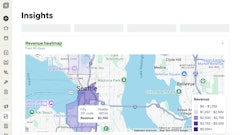
There is an entire universe of challenges facing the green industry: inflation, labor shortage, supply chain constraints and systemic inefficiencies.
While some businesses have struggled to cope with inflation and supply chain constraints, others have remained largely resilient. They have managed to prosper in the face of a tough economic environment and the perennial manpower shortage.
So what is the difference? See below for two-part theory to explain this.
1. People
Everything starts with your people. The best people bring the best results.
2. Systems
The second part of the theory involves systems. Businesses that have solid systems and infrastructure to enable their teams to live up to their potential win consistently. Systems that promote employee productivity lead to better bottom- and top-line performance. They also help employees realize their personal goals, keeping them happy in the organization.
With this in mind, the following is a series of ideas to help solve sales workflow problems.
What’s broken with the sales process?
Imagine the entire landscaping sales process: You receive a bid request. You then size up the property on Google Maps. If you don’t have an estimating team, you manually measure it by visiting the site, which can take a couple of weeks if it’s a large homeowners' association.
While you do all this, you try to set time up with the property manager to establish a rapport and understand the requirements better. Once you are done manually measuring the site, you work on the production rates to arrive at the estimate.
Then you write the proposal, sometimes very close to the submission deadline. Sometimes you are late or scramble to put a proposal together by guesstimating. Not to mention the proposals you could not send out because you did not have the time to work on those.
The moral of the story is that there is just so much to do to put that proposal together. As a business developer, your job is to open doors, build relationships and win business. However, what ends up happening is hours spent away from doing all this just because you had to measure, estimate and write the proposal.
Let’s delve into these problems in detail
1. Time is wasted measuring sites manually
Whether you are wheeling off the site or drawing polygons on Google Maps, it is a drag on your productivity and keeps you away from selling. In the peak season, you would be spending up to 10 hours per week measuring.
Think about what you can do with 10 extra hours every week in the peak season. Over time, these lost hours accumulate and multiply. It slows down your sales heavily.
2. Poor accuracy of estimates
Building estimates manually is a task in itself. You need to devote time to building the off-site measurements and you need the right production factors in place. The cost of a mistake here is huge: if you bid too high, you risk losing business to your competitors; if you bid too low, you shave your margins thin. What often ends up happening is that landscapers rely on guesstimates, which results in lost bids.
3. Missed out money on opportunities due to lack of time/accuracy
Most contractors are passing up project contracts as they are preoccupied, lack the time to estimate and are leaving money on the table.
The sales force in the landscaping and construction industry is stretched thin. This problem can especially be felt when instead of building customer relationships, sales people are stacked with jobs that can be automated.
No matter how skilled you are at your trade, you can’t win every job, especially if your team cannot get accurate proposals out the door.
4. Way too many tools to juggle at once
The entire process requires you to use multiple tools for takeoffs, estimates and proposals. Your manual takeoffs tool might not be so good when it comes to creating estimates or proposals.
Therefore, you are stuck in the busy work of exporting outputs from one tool and importing them into another.
5. Multisite portfolios are impossible to bid for
When you are relying on measuring wheels and drawing polygons, thousands of sites in the portfolio take weeks to measure. Often these bids end up being based on guesstimates, leading to heavily unoptimized bids.
What is the solution?
One possible solution is an end-to-end sales process automation solution that does everything for you, right from the moment you receive the request for a proposal to the moment you submit the proposal.
You enter the address, select a preset proposal template and that should be it. You then go back to prospecting and spending time with your prospects while the software does everything for you in the meantime.
So it’s not just a tool, it’s your personal sales assistant: smart, accurate and agile. With such a solution, you can:
- Save time and spend it on what you love doing: selling
- Accurately estimate costs to evaluate project profitability
- Send out as many proposals as you want
- Crush your quota with proposals that win
Remember everything starts with sales. So once a job is won, you can always look back by performing project reviews to compare actuals to the budgeted costs. This gives you an idea of how accurate your bids have been and helps your ops team plan better.
















![Gravely Pro Turn Mach One My23 Dsc03139 Edit 1200x800 5b2df79[1]](https://img.greenindustrypros.com/mindful/acbm/workspaces/default/uploads/2025/10/gravely-pro-turn-mach-one-my23-dsc03139-edit-1200x800-5b2df791.BucBnDoN22.jpg?ar=16%3A9&auto=format%2Ccompress&fit=crop&h=135&q=70&w=240)



